-
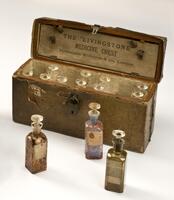
This medicine chest was created by the Burroughs Wellcome and Company, named after David Livingstone, and was often given for free as publicity for the company. This one was with Algot Lane, a Swedish-American explorer, on his 1911 expedition to the Amazon jungle in Brazil.
It contained a variety of medicines, including a large amount of quinine to help prevent malaria. It also had a vareity of different pills and tablets.
-

This is an excerpt taken from the Pharmacopoeia of the Royal College of Physicians, of London in 1851 showing the use and composition of Chloride of Mercury, of calomel. Which states it’s use as an “extremly effective purgative,”
-
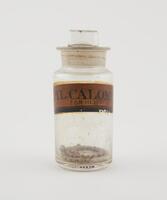
This bottle of a tabloid form of calomel could have been used in a medicine chest, similar to the rosewood medicine chest.
-

This Rosewood Medicine Chest included a Tall rectangular rosewood medicine chest with 13 labelled glass bottles, a balance, and 2 types of weights, which could have been used domestically or by a medical practitioner. One of the bottles in the chest was calomel, a purgative.
-
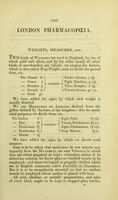
This is an excerpt from the Pharmacopoeia of the Royal College of Physicians, of London from 1851 which was the last edition published before the creation of the British Pharmecopia in 1864.
This page is an example of how attempted to create standard practices, by breaking down and explaining the different weight and liquid measurements that will be used in the following recipes.
-
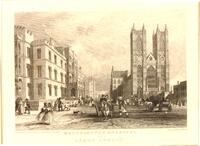
Dated at the start of the reign of Queen Victoria, this print depicts, on the left, Westminster Hopstial and on the right, Westminster Abbey; it also had its own medical school in 1834 and is an example of the development of a hospital-based medical practice.
Historian David Livingstone Stated that Hosptials in the 19th century turned into places that, “Could promote itself as a scientific shrine with diagnostic laboratories and clinical technologies; and the wealthy willingly came for care."
-
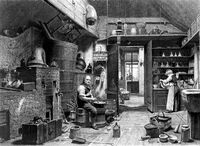
Image of John Bell's Pharmacy, with apothecary John Simmonds and his apprentice, William working in the laboratory.
The Apothecaries’ Act of 1815, required licensing for medical practitioners in order for governmental regulation and standardization that served as one of the catalysts of innovation in the medicine.
John Bell's son Jacob Bell was one of the founders of the Pharmaceutical Society of Great Britain in 1842 that helped with regulations and reform during the period.






